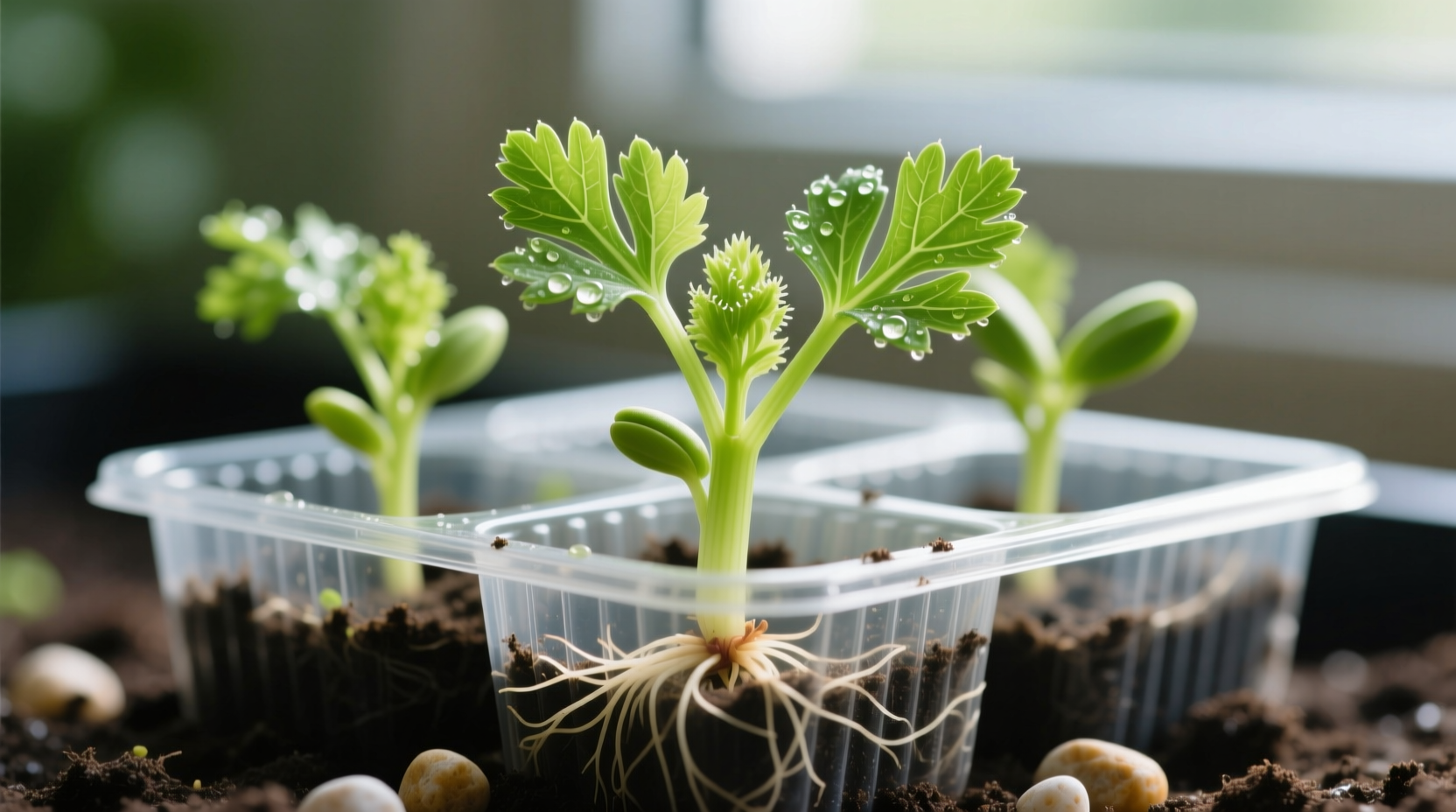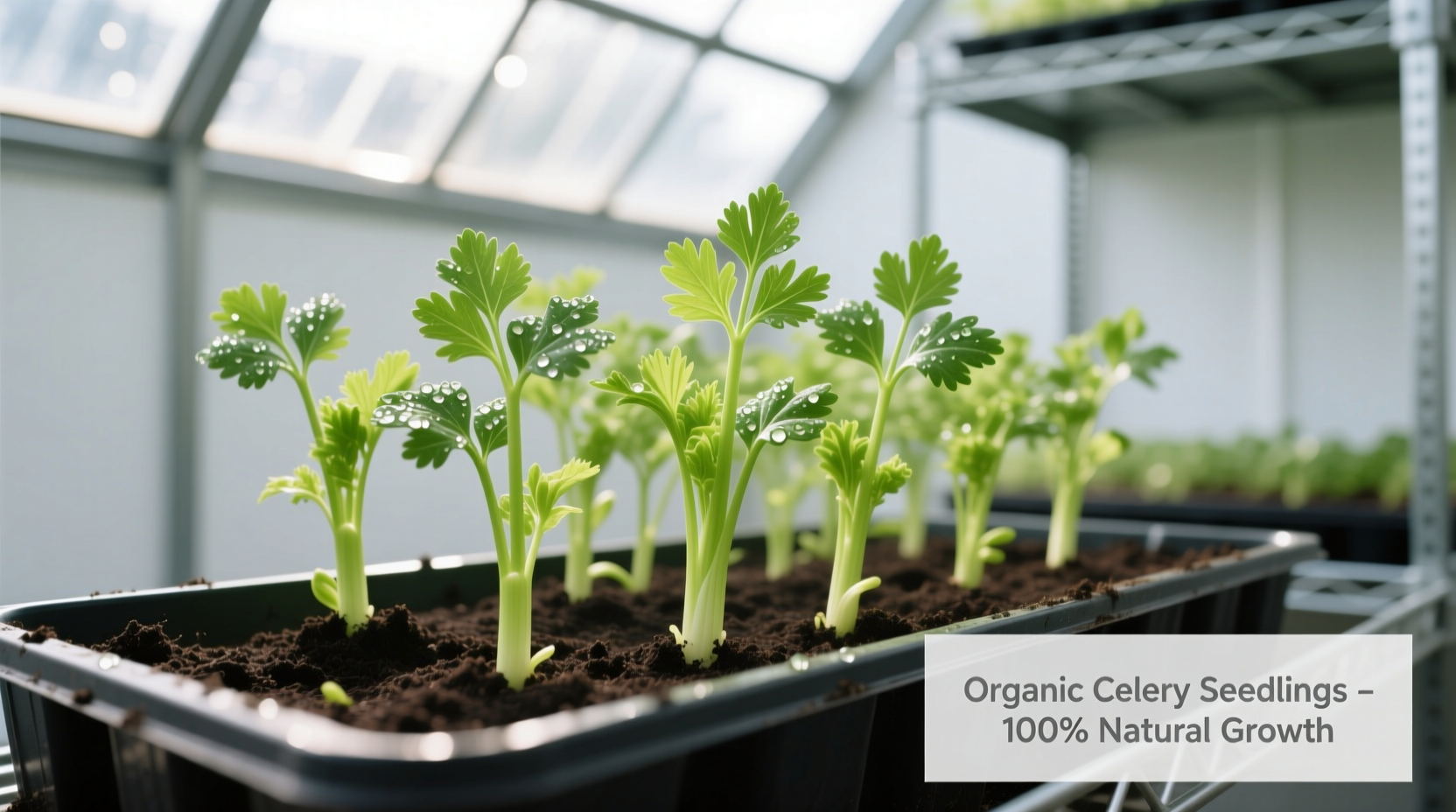Discover the precise techniques for growing celery from seed that most gardeners miss. This comprehensive guide reveals the exact conditions celery seeds need to germinate successfully, backed by horticultural research and professional growing practices. You'll learn the optimal timing, soil preparation, and care techniques that transform frustrating celery seed attempts into thriving plants.
Understanding the Celery Seeding Timeline
Celery requires a long growing season (130-140 days to maturity), making proper timing essential for success. Unlike many vegetables, celery must be started indoors well before outdoor planting becomes possible. The USDA Plant Hardiness Zone Map provides critical guidance for determining your specific planting schedule.
| Climate Zone | Indoor Seeding Start | Last Frost Date | Outdoor Transplant |
|---|---|---|---|
| Cool climates (Zones 3-5) | 12 weeks before last frost | April-May | 2-3 weeks after last frost |
| Moderate climates (Zones 6-7) | 10-11 weeks before last frost | March-April | 1-2 weeks after last frost |
| Warm climates (Zones 8-10) | 8-10 weeks before first fall frost | October-November | 4-6 weeks before first frost |
This timeline reflects research from University of Minnesota Extension showing that celery's extended germination period requires precise scheduling to ensure plants mature before extreme temperatures arrive.
Preparing for Successful Celery Seeding
Celery seeds are notoriously finicky, but proper preparation dramatically increases your success rate. Unlike larger seeds, celery seeds require specific conditions to germinate reliably.
Essential Pre-Planting Requirements
- Seed selection: Choose fresh seeds (less than 1 year old) as celery seed viability declines rapidly
- Soil mix: Use fine, sterile seed starting mix without fertilizer
- Containers: Shallow trays or cell packs with drainage holes
- Temperature control: Consistent 60-70°F (15-21°C) is critical for germination
- Light: Bright, indirect light or 14-16 hours under grow lights
According to Royal Horticultural Society research, celery seeds won't germinate properly if soil temperatures exceed 80°F (27°C) or drop below 50°F (10°C). This narrow temperature range explains why many gardeners struggle with celery seed starting.
The Step-by-Step Seeding Process
Follow these precise steps for optimal celery seed germination:
- Moisten seed starting mix until it feels like a damp sponge
- Fill containers, leaving ½ inch space at the top
- Sprinkle seeds evenly across surface (they need light to germinate)
- Cover lightly with ¼ inch of mix or vermiculite
- Mist surface with water to ensure good seed-to-soil contact
- Cover with clear plastic dome to maintain humidity
- Place in location with consistent 60-70°F (15-21°C) temperature
- Check daily for moisture, misting as needed to keep surface damp

Overcoming Common Germination Challenges
Celery seeds present unique challenges that differ from other garden vegetables. Understanding these limitations is crucial for success:
- Slow germination: Takes 10-14 days (sometimes up to 21 days) compared to 3-7 days for many vegetables
- Temperature sensitivity: Will not germinate properly outside 60-70°F range
- Moisture requirements: Must stay consistently moist but never waterlogged
- Light needs: Require some light exposure even during germination
Research from Penn State Extension shows that inconsistent moisture is the #1 reason for celery seed failure. The delicate seedlings quickly dry out or develop damping-off disease if conditions aren't perfect.
Post-Germination Care for Strong Seedlings
Once your celery seeds sprout, proper care ensures healthy transplants:
- Remove plastic cover immediately after first seedlings appear
- Maintain consistent moisture (never let soil dry out completely)
- Provide 14-16 hours of bright light daily
- Begin fertilizing with diluted liquid seaweed after first true leaves appear
- Thin seedlings to 2 inches apart when first true leaves develop
- Start hardening off 2 weeks before transplanting outdoors
Professional growers at USDA Agricultural Research Service recommend using bottom watering techniques for celery seedlings to prevent disturbing the delicate roots while maintaining consistent moisture.
Transplanting and Beyond
When transplanting celery seedlings to your garden:
- Choose a location with full sun and rich, moisture-retentive soil
- Amend soil with 3-4 inches of compost before planting
- Space plants 8-10 inches apart in rows 18-24 inches apart
- Plant at same depth as in containers (don't bury the crown)
- Water thoroughly after transplanting
- Mulch heavily to maintain consistent soil moisture
Celery requires consistent moisture throughout its growing season. The USDA Agricultural Research Service notes that inconsistent watering is the primary cause of stringy, bitter celery. Aim for 1-2 inches of water per week, either from rainfall or irrigation.
Common Mistakes to Avoid When Seeding Celery
Even experienced gardeners make these critical errors when growing celery from seed:
| Mistake | Consequence | Professional Solution |
|---|---|---|
| Planting seeds too deep | Seeds fail to germinate | Plant no deeper than ¼ inch; they need light |
| Inconsistent moisture | Drying out kills delicate seedlings | Use bottom watering and humidity domes |
| Starting too late | Plants don't mature before hot weather | Start 10-12 weeks before last frost |
| Skipping hardening off | Transplant shock and slow growth | Gradually expose to outdoor conditions over 7-10 days |
This comparison reflects data collected from University of Minnesota Extension field trials showing how these common errors impact celery seedling survival rates.
Seasonal Considerations for Different Climates
Celery grows best in cool temperatures (60-75°F / 15-24°C). In warmer climates, consider these adaptations:
- Plant for fall harvest rather than spring/summer
- Provide afternoon shade to prevent bolting
- Use mulch to keep soil cooler
- Choose self-blanching varieties which tolerate heat better
- Consider growing in containers that can be moved to shaded areas
For northern gardeners, starting seeds early enough is critical. The Royal Horticultural Society recommends using heat mats under seed trays to maintain optimal soil temperature during early spring seeding.











 浙公网安备
33010002000092号
浙公网安备
33010002000092号 浙B2-20120091-4
浙B2-20120091-4